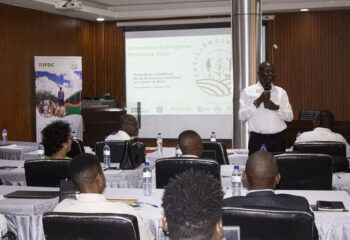Part 1 – Improved Fertilizers: A Pillar for a Healthy and Prosperous World
Just like humans, crops have specific nutrient requirements. Nourishing plants well is essential for farmers to increase yields and supply food for the earth’s increasing population. Current fertilizer technology and use cannot support higher food demands. In addition, traditional fertilizers and poor recommendations keep farmers from profiting. Developing improved fertilizers that are affordable, efficient and climate-friendly will help producers increase food security and profit from their farms.
Feeding Crops Increases Food Security
In the next 35 years, the world population will increase by at least 2 billion people, requiring farmers to grow 70 percent more food on the same amount of land. The challenge for these producers seems daunting, but improved fertilizers will boost crop yields. To keep pace with increasing plant food needs and climate challenges, fertilizer technology must move beyond primary nutrients and decades-old fertilizer production practices. Development and research organizations must make better nutrient blends and application practices. In addition, climate challenges task fertilizer researchers with creating technologies that do less harm to the environment. Finally, new fertilizer products must make financial sense to farmers and help their farms thrive. Organizations like IFDC collaborate with private and public partners to help get food to markets so farmers profit from their work.
Feeding Crops Boosts Farmer Profits
Often, the cost of traditional fertilizers limits smallholders’ ability to feed their crops well. But farmers can increase profits by using improved fertilizers. For the most part, how much money a farmer makes depends on two markets: input and output. Producers often have little influence on market prices – the output side. On the input side, though, more affordable and efficient fertilizers increase profit margins. In Bangladesh, for example, many rice farmers using urea deep placement (UDP) have increased income per hectare by $400 (about 30 percent). Decreasing input costs also requires efficient markets, so farmers can access – and afford – improved fertilizers.
Developing affordable, efficient fertilizers improves food security and farm profitability. Stay tuned as we look at several research opportunities explored by IFDC and other organizations. In the meantime, share your organization’s nutrient solutions with us @IFDCNews on Twitter.



